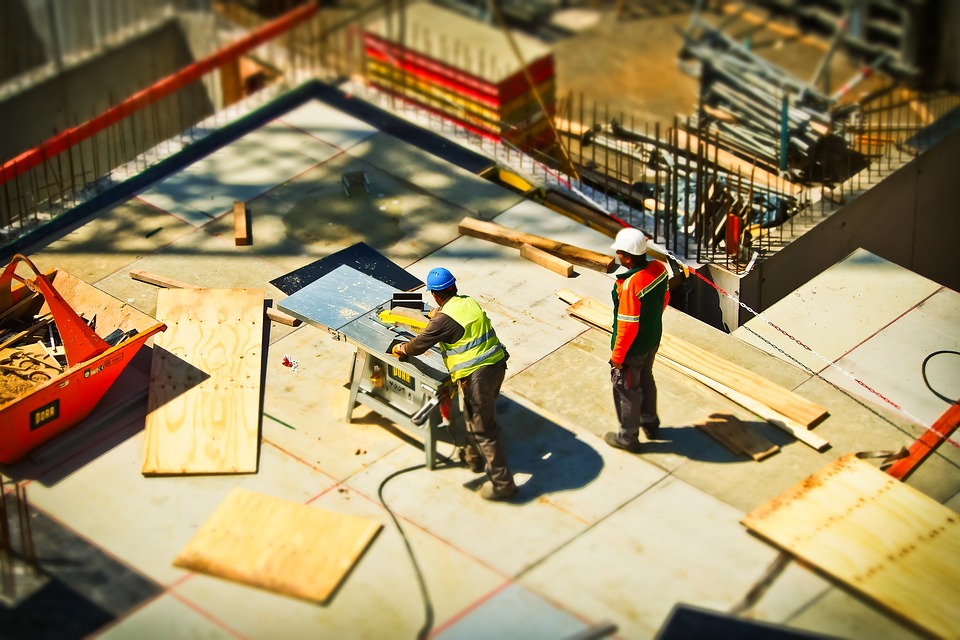Lobbyists acting for the housing industry have demanded continued Help to Buy (HTB) subsidies from the Scottish Government, despite criticism that the cash simply inflates house prices and benefits large house builders, The Ferret can reveal.
The heads of Homes for Scotland and banking and financial services body UK Finance both pressured the government to extend HTB, according to communications released under freedom of information law.
Both bodies sit on the government’s Help To Buy Scotland affordable new build monitoring group, which gives them privileged access to senior civil servants and monitoring data the government holds on the HTB scheme.
With HTB, the government subsidises the mortgages of prospective buyers by up to 15 per cent of the price of a new home. But critics say it pushes up house prices to the detriment of those on low incomes.
In 2017 we reported that a social policy expert, housing charity Shelter Scotland, and the Scottish Greens, all called on the government to end the controversial scheme. The Greens said the government is now facing pressure from groups with “vested interests”.
‘Dysfunctional’ Help to Buy subsidy should be scrapped, say critics
Transparency campaign group, Spinwatch, said that problems arise “when private companies abuse privileged access in clear conflict of interest situations”. They called on governments to “move away from the involvement of private industry in policy making”.
However, Homes for Scotland said it conveys the views of its members in “a professional and evidence-based manner at all times”, while UK Finance said HTB was a good example of “public and private sector engagement”.
Between 2017-19, the government allocated an average of £25,300 in equity for each home purchased with the subsidy.
Data shows that just under half of the estimated £118 million in taxpayer subsidised mortgages went to Scotland’s three largest housebuilders, Persimmon, Taylor Wimpey and Barratt, between 2017-19. These three firms are all members of Homes for Scotland.
In a letter to finance secretary Derek Mackay MSP, Homes for Scotland chief executive Nicola Barclay put pressure on the government to continue HTB and expand its financial contribution to the scheme.
In a letter dated 8th December 2017, Barclay urged Mackay to inject more money into HTB after the UK Chancellor announced more funds for the English HTB scheme during the 2017 Autumn budget.
Mackay was urged to use the extra money made available to Scottish Government as a result of Barnett consequentials to commit to “as an absolute minimum – an annual budget of £50m for HTB Scotland up to and including 2020-21”.
This would equate to “just 10 per cent of the consequentials”, allowing the government to “fund social rent and other forms of social housing”, Barclay claimed. The government’s “ongoing support is, in our opinion, essential,” she added.
The government was also pressured to extend HTB by UK Finance.
“Our members are getting more concerned about the lack of news on the future of the scheme, particularly as some firms have just joined”, the banking body told a civil servant in an email dated 3 April 2019.
The government’s timescale did not leave “enough time for the industry (both lenders and builders) to adapt or transition”, it added. “What’s happening, please?”
A civil servant replied that the scheme was due to be evaluated “based on evidence, as well the latest economic position”, with the results due by the end of 2019.
In response, UK Finance warned that certain factors had the potential to make it difficult for the government to implement an extension of the scheme if it did not act quickly. These included a Financial Conduct Authority consultation on mortgage affordability rules, as well as Brexit uncertainty and Westminster having extended the scheme in England.
“Without a prompt announcement of Scotland’s intentions for this period, there is a risk of potential competitive disadvantage for Scotland if builders scale-back production there in favour of England where there is clear future commitment of support”, warned UK Finance.
In another email dated 18th June 2019, the body asked when “stakeholder involvement” would be included in the development of the government’s first-time buyer deposits, adding: “the clock is ticking.”
‘Clear conflict of interest’
In minutes of the HTB monitoring group dated 19th June 2018, a civil servant indicated that the two groups would be given privileged access to government data on housing.
Joanne McDowell of the government’s More Homes division confirmed the government was “happy to share monitoring information with Homes for Scotland and UK Finance but not for wider circulation outwith these organisations.”
David Miller, co-founder of Spinwatch, said the relationship between the two bodies and the government was “another indication of the need to move away from the involvement of private industry in policy making”.
He said: “This example shows the problems that arise when private companies abuse privileged access in clear conflict of interest situations.
“The government should be building many more homes to meet the housing crisis and the wholly avoidable daily deaths of homeless people on our streets. They should avoid lining the pockets of building company owners in the process.”
The Scottish Greens’ Andy Wightman MSP, who chairs the cross-party group on housing at Holyrood, argued that HTB “does nothing to tackle the housing crisis”.
The scheme “actually makes housing more expensive for everyone else by pushing up prices generally and does little to benefit those on low incomes or in rural areas,” he said. “It doesn’t surprise me that vested interests are putting pressure on the government.”
Jackie Bennett, director of mortgages at UK Finance argued that HTB “has helped many homeowners to take their first step on to the housing ladder and is a great example of public and private sector engagement.”
She added: “The mortgage industry continues to work with the Scottish Government to support its housing strategy.”
A Homes for Scotland spokesperson said: “As a membership organisation, it is our responsibility to convey the views of those we represent. We do this in a professional and evidence-based manner at all times.
“Our member companies are responsible for delivering the vast majority of new homes that Scotland needs to meet the housing needs and aspirations of its growing population.”
HTB ‘not benefiting those in rural areas’
Data obtained by The Ferret reveals that of the 4,662 subsidised homes built between 2017-19, more than half went to properties in five central belt council areas, with little going to properties in rural council areas.
Some 15 per cent were built in Glasgow, 12 per cent in South Lanarkshire, 11 per cent in North Lanarkshire, and 7 per cent each in Renfrewshire and Edinburgh.
Scotland’s most remote areas benefited least from subsidised mortgages. These included Orkney and Argyll and Bute, the latter of which saw just two homes built. Not a single home supported by HTB was built in Shetland and the Western Isles.
In July we reported that the Scottish Government was failing to meet targets to boost the number of affordable homes for rural and island communities. Campaigners said that excessive bureaucracy, lack of support, tight time frames and restrictive regulations had prevented communities from making use of the funding.
Scottish Government failing to meet rural housing targets
Derek Logie, chief executive of the Rural Housing Scotland charity, said new figures show that HTB “has had a limited impact in some rural areas; despite the welcome Help to Buy for Small Developers scheme.”
Logie called for a “Help to Build” scheme in rural areas “to provide grant support for self build, with the grant converted into an equity share in the completed build.” Such a scheme would “better reflect the nature of housebuilding in rural Scotland and enhance the support already provided through the Self Build Loan Scheme”, he added.
The Scottish Government defended HTB as “a demand-led scheme” that helps buyers into homeownership, while letting them “decide which area they wish to purchase in”.
A spokesperson said that first time buyers and under 35s were the main beneficiaries of HTB and Open Market Shared Equity schemes, making up over 80 and 70 per cent of participants respectively.
However, an “independent evaluation” of all the government’s shared equity schemes was underway and would inform its decisions on the future of HTB ”beyond 2021”, the spokesperson added.
By Jamie Mann
Source: The Ferret




